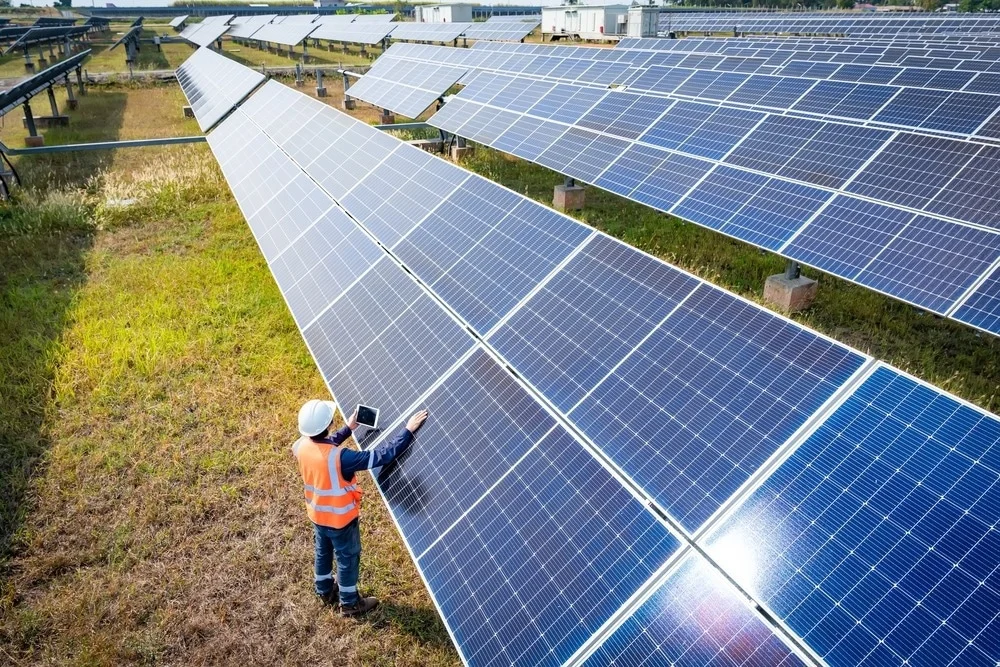Solar energy is one of the most important technological advances of our time, revolutionizing the way we generate and use energy. Climate change, resource depletion, and rising electricity costs have driven inventors around the world to create sustainable solutions using the sun. From small appliances to large infrastructure projects, solar energy is used in a wide range of applications, offering a greener, superior alternative to traditional energy sources. Breakthroughs in solar technology are changing our lives and creating a sustainable future.
The Rise of Solar Roof Tiles
Traditional solar panels have long been the symbol of solar energy, but solar roof tiles are becoming increasingly popular. These miniature solar panel tiles fit into regular roofing materials. These new tiles are installed directly onto the roof, making them more attractive and taking up less space than bulky roof installations. They provide both a roof and energy. As efficiency and price improve, solar roof tiles are becoming widely used in homes and commercial buildings as a compact and powerful source of solar energy.
Breakthroughs in Solar-Powered Transportation
Transportation is a promising area for solar technology. Today, solar cars are a reality in many forms. From solar cars and buses to ships and airplanes, solar panels have great potential for use in transportation. Electric vehicles (EVs) can now use the sun to extend their range, minimizing the need for charging stations. Some cities are using solar-powered buses to reduce pollutant emissions and fuel costs. These innovative technologies could change the way we travel by making clean, self-sufficient transportation the norm.
Solar Chargers and Devices
Mobile devices are essential to everyday life, and with that comes the need for reliable, portable power sources. Solar-powered devices and chargers. Travelers, campers, and anyone without access to electricity will appreciate these gadgets. Portable solar-powered solutions, such as backpacks with phone charging, lights, and power banks, are on the rise. These developments make it easy and sustainable to stay connected and powered when there’s no electricity. They are essential in emergency situations and for off-grid living where reliable energy is needed.
Solar Water Purification and Desalination
Solar desalination and purification technologies are improving lives in water-stressed areas. Solar energy makes desalination cleaner and more efficient than traditional methods. These devices use solar energy or photovoltaic electricity to remove salt and pollutants from brackish or contaminated water. Communities, agriculture, and livestock benefit from safe drinking water. Governments and agencies are investing in these technologies to provide long-term water solutions to drought-prone and developing countries.
Smart Homes with Solar IoT Devices
Solar and smart home technologies are changing the way homes use energy. Solar panels can power lights, appliances, and IoT ecosystems in homes. Smart thermostats, lighting, security systems, and home assistants can now run on renewable energy. This reduces electricity bills and daily carbon emissions. Smart solar systems can monitor energy consumption in real time and adjust output based on usage patterns to maximize efficiency and cost savings.
Solar Farms on Water Bodies
Floating solar farms are an innovative way to expand solar infrastructure without taking up land. These installations consist of solar panels mounted on floating platforms in lakes, reservoirs, and other bodies of water. They save on land costs and increase efficiency through water cooling. Floating solar farms benefit aquatic habitats by reducing evaporation and algae growth. Japan and Singapore, with small land areas but abundant water resources, are pioneering a unique energy solution.
Solar Drones and Space Applications
Solar drones and aircraft are finding their way into aerospace technology. Ultralight solar panels allow these crafts to fly for long periods of time without refueling. Solar drones are ideal for remote surveillance, environmental monitoring, and communications. Solar satellites and space stations can use improved solar panels to generate renewable energy, reducing the need for refueling flights. Solar energy and aviation promise to create more efficient and environmentally friendly aircraft.
Solar Energy Storage and Battery Innovations
One of the biggest hurdles for solar technology is storing energy for use at night or on cloudy days. Recent advances in solar cell storage technology are successfully solving this problem. Modern lithium-ion batteries and flow batteries can store energy from the day. Companies are developing smart storage solutions that work seamlessly with solar systems for homes and businesses to ensure power supply. This technology makes solar energy more stable and independent, improving energy security and minimizing dependency on the grid.
Solar Energy in Agriculture
Solar technology is transforming agriculture. Farmers are using solar irrigation, tractors, and greenhouses to increase productivity and sustainability. These technologies ensure energy supply in agriculture and reduce operating costs and carbon emissions. Precision farming and resource management benefit from solar sensors that monitor soil, weather, and crop health. As climate change damages agricultural productivity worldwide, solar energy offers a sustainable and environmentally friendly alternative to traditional farming methods.
Solar Coatings and Building Materials
Solar coatings and other photovoltaic building materials are advancing the development of energy production. Scientists have developed paint-like compounds that generate electricity when exposed to sunlight. These materials can be installed on walls, roofs, and cars to create solar panels. Transparent solar windows and photovoltaic tiles also make buildings self-sufficient. These technologies combine beauty with functionality, allowing architects and designers to use renewable energy solutions without sacrificing aesthetics.
Conclusion
Solar technology is rapidly evolving to make it efficient, environmentally friendly, and affordable. From transportation and agriculture to smart homes and water purification, solar inventions are improving our environment. As costs fall and efficiency increases, solar energy will dominate the global energy landscape. Use these innovative technologies to help customers and combat climate change. The sun has always given life; now it is our most powerful tool for sustainable development.
FAQs
1. What are floating solar farms?
Solar panels on floating structures in lakes or reservoirs provide energy without taking up land for floating solar farms.
2. Is solar energy reliable?
In places where there is no electricity, solar chargers, lights, and power banks are reliable and practical.
3. Can agriculture use solar energy?
Of course it can. Solar energy can potentially contribute to data-driven precision farming by powering irrigation systems, agricultural machinery, sensors, and monitoring equipment.
4. What is solar paint?
Solar paint uses photovoltaic elements to convert sunlight into electricity.
5. Is solar energy cost-effective?
The cost of solar energy will decrease over time due to lower equipment prices, maintenance costs, and electricity rates.




